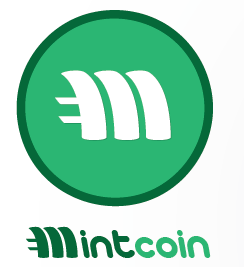 Multipool mining essentially mines the most profitable coins and then sells those coins to pay miners out in a currency of their choice. This was the primary goal for many miners of altcoins in the beginning when ASICs made it nearly impossible for average people to mine Bitcoin. So instead of directly mining Bitcoin, people could mine Scrypt based Proof-of-Work coins with graphics cards or CPU-only PoW (Quark/Maxcoin) coins and be paid in Bitcoin.
Multipool mining essentially mines the most profitable coins and then sells those coins to pay miners out in a currency of their choice. This was the primary goal for many miners of altcoins in the beginning when ASICs made it nearly impossible for average people to mine Bitcoin. So instead of directly mining Bitcoin, people could mine Scrypt based Proof-of-Work coins with graphics cards or CPU-only PoW (Quark/Maxcoin) coins and be paid in Bitcoin.
In order for PoW coins to function properly and securely, they need to have miners that can confirm transactions and discover new blocks. And ideally, they would have spread the mining among as many people as possible so that nobody could take over 51% of the network hashing power (referred to as a 51% attack). This will become even more of a problem now that Scrypt ASICs are in the final stages of development. With Proof-of-Stake coins, this 51% is not a problem since all the Proof-of-Work generated coins have been mined already and the “minted” coins that are produced in individual wallets essentially turns everyone running a wallet client into a miner without using any extra energy. PoS coins have relatively fewer risks that are inherent to PoW coins regarding network centralization.
The first coin to introduce Proof-of-Stake to cryptocurrencies was Peercoin, which is a hybrid PoW/PoS coin - meaning both wallet holders and miners can be rewarded blocks and new coins. NXT was the first pure PoS coin, but this was not based on the Bitcoin protocol and while it had an initial enthusiastic response, it’s less than stellar UI has kept many from giving it a try. Two other hybrid coins that use Proof-of-Stake in their block generation are Ultracoin and Fluttercoin. Mintcoin and Blackcoin were the first PoS coins to be distributed initially using PoW. Mintcoin was released on February 6th and Blackcoin was released February 16th. Zeitcoin and ECC coin were launched with very similar specifications shortly after.
With the recent advent of pure Proof-of-Stake coins, two in particular have stood out recently for their strong community involvement and solid development. Mintcoin and Blackcoin both have thriving communities. One major difference between the two is that Mintcoin was pre-mined and the pre-mine allowed for quick development of websites, infrastructure, and new wallets. While Blackcoin had no pre-mine and is funded entirely by community donors, it has achieved very impressive results through bounties.
Both Mintcoin and Blackcoin had an intitial Proof-of-Work mining period to distribute the initial coins. Mintcoin has a coin cap of 70 Billion total that will take many years to achieve, and Blackcoin has a very low inflation rate of 1% per year on top of approximately 74 million coins that were mined initially (currently ~75 million BC). This would explain the significant price differences between these two coins.
 Recently, Mintcoin prices have slumped down after the Proof-of-Work stage ended. Many people thought the prices would rise, because there would be less coins hitting the market everyday. In order to create some more buying pressure, the community advocated for a multipool that pays out in Mintcoin, such as this one at Hashcows.
Recently, Mintcoin prices have slumped down after the Proof-of-Work stage ended. Many people thought the prices would rise, because there would be less coins hitting the market everyday. In order to create some more buying pressure, the community advocated for a multipool that pays out in Mintcoin, such as this one at Hashcows.
Blackcoin has a multipool that should be updated very soon.
Are multipools creating artificial demand for PoS coins?
It’s nothing new when we saw multipools becoming established for the purpose of trading coins immediately for Bitcoin. Now, instead of finding the most profitable coin and trading for bitcoin, they are trading for Mintcoin or Blackcoin. It’s a novel idea, but in the end it probably will not have a dramatic impact on price.
Does mining other coins to buy these coins circumvent the stated purpose of energy efficiency and decentralization?
It does, considering that electricity and resources are being spent mining coins in exchange for these “energy efficient” coins. However, the bigger benefit of PoS coins is not the energy savings aspects, but the resistance to centralization or a 51% attack. Even though scrypt miners can still trade for Mintcoin, they can’t disrupt the integrity of the Mintcoin network, which is dependent upon those PoS holders of the coins keeping the network alive. Miners would not have any role in keeping the ledger in tact. PoS is a system that is superior to that attack, including newer “ASIC resistant” algorithms like the Scrypt+N algorithm in Vertcoin. But Scrypt+N is relatively new and it’s not proven that a piece of hardware cannot be designed to have an advantage.
Ultimately it is real demand for Mintcoins/Blackcoins and an economy around these coins that will create their long-term viability.
One of the most impressive things about the Mintcoin development team is that they have been very pro-active on getting Mintcoin accepted by dozens of businesses. A quick visit to the Mintcoin subreddit gives links to many different types of businesses accepting Mintcoin.
Blackcoin developers are moving quickly to develop more bounties and expand merchant adoption as well, and we are very curious to see how these Proof-of-Stake coins are adopted in the future and distinguish themselves from Proof-of-Work based coins.
Do you have opinions about PoS vs. PoW coins, multipool buying, and the dangers that PoW coins face from 51% attacks?
We would like to hear your questions or comments!
 CoinJoint.info Covering Bitcoin, Altcoins, Cryptocurrencies, and more…
CoinJoint.info Covering Bitcoin, Altcoins, Cryptocurrencies, and more…



As far as your saying that “Does mining other coins to buy these coins circumvent the stated purpose of energy efficiency and decentralization?” does circumvent the stated purpose, this is very wrong and untrue.
I am a very big proponent of Mintcoin, but I still have a lot of money invested in mining rig gear. Am I, as well as all the others that mined Mintcoin and now promote it supposed to just sell or turn off our mining rigs? With more PoW/PoS coins coming out, as well as ASICs, the multi pools will be somewhat of a deterrent for people to continue to invest large amounts of money into GPU miners. This in turn will reduce the electrical consumption of GPU mining at the same time.
Thanks for the feedback.
I suppose that GPU miners will just point their miners at ASIC resistant coins (X11, Scrypt N) in the future and sell those.
In the end, it seems that just making new coins to point miners at will become redundant.
“It’s a novel idea, but in the end it probably will not have a dramatic impact on price”
For Blackcoin it will. Since they will likely lose more than 1% to lost coins a year any coins purchase raise the price. If the multipools can generate growing purchases in the range of 100-1000 BTC a day would put constant upward pressure. If this continues more miners join and the process intensifies. This creates a positive feedback loop that would have a positive impact on the price.
I suppose maybe in the long-term it won’t have a dramatic effect. But you are right, in the immediate future, it may be crucial
Blade was introduced with POW/POS before both MintCoin and BlackCoin with very little fanfare. It has 100% annual return on POS stake and there’s still over 10% of POW left for anyone that’s interested…
I’m not in any way affiliated with the developer but she has a handful of well supported and non-premined coins. Definitely one to watch.
Thanks Jeff, I might update this article soon in order to clarify some things and add some other coins that I missed.